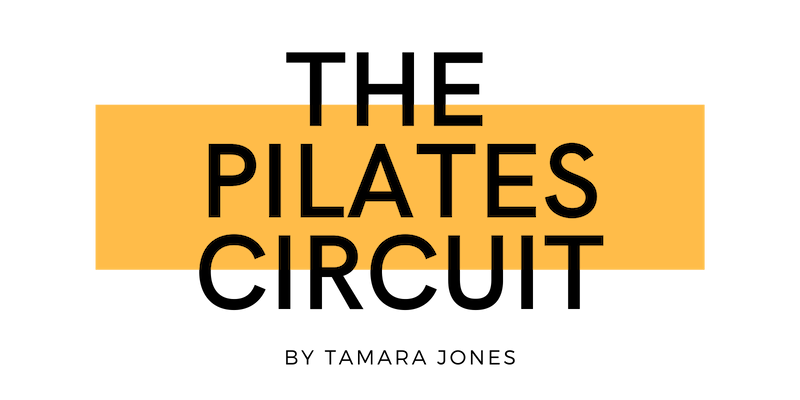What to Bring to Pilates Class (Complete Guide)
Knowing what to bring to a Pilates class & how to be prepared ensures an effective and comfortable experience.
Gearing Up for Pilates: Essential Items for Every Class
Comfortable attire, appropriate footwear, and useful accessories can affect your Pilates experience.
Comfortable Attire
Choose form-fitting yet breathable attire that allows you to move freely. Think leggings, fitted tops, or tank tops.
Loose clothing might get in the way or distract you during exercises.
Footwear Considerations
Pilates is done barefoot, but you can also opt for Pilates grip socks. These socks provide additional traction, helping you maintain stability and prevent slipping.
They can also be more hygienic, especially when using shared equipment at a studio.
What to Bring to a Pilates Class
Knowing what to bring to Pilates class ensures you are comfortable, focused, and ready to make the most of each session.
Must-Have Pilates Accessories for Beginners
Mat: Many studios provide mats. Bringing your own ensures cleanliness and comfort.
Water Bottle: Staying hydrated is crucial, so keep a water bottle handy.
Towel: A small towel is useful for wiping away sweat during a rigorous session.
Personal Hygiene Items: Items like deodorant and hand sanitizer can help you feel fresh and clean.
Optional Equipment to Enhance Your Pilates Experience
Resistance Bands: These can add an extra challenge to your workouts.
Pilates Ring: Useful for targeting specific muscle groups and adding variety to exercises.
Foam Roller: Great for pre- and post-class stretches to enhance flexibility and recovery.
Preparing for Your Pilates Session
From proper hydration and nutrition to gathering the right gear, preparing for your Pilates session will maximize the benefits of your practice.
Hydration and Nutrition: What to Eat and Drink Before Class
Eat a light meal or snack about 1-2 hours before class. Focus on easily digestible foods like fruits, yogurt, or a small smoothie that provide energy.
Hydrate well before class but avoid drinking large amounts to prevent discomfort.
Understanding Pilates Equipment
Pilates utilizes a variety of machines and props to enhance different aspects of your practice.
A Guide to Common Pilates Machines and Props
Understanding Pilates equipment is crucial for maximizing your workout and achieving your fitness goals.
Reformer: A reformer machine uses springs, a sliding carriage, and various bars and straps for a full-body workout.
Cadillac: Also known as the Trapeze Table, it provides a wide range of exercises with bars, straps, and springs.
Magic Circle: A flexible ring that adds resistance to various exercises.
Foam Roller: Used for balance, core strength, and muscle release.
Arriving at the Studio: What You Need to Know
Knowing what to expect and how to navigate the studio environment can help you feel more confident and focused.
Check-In Essentials and Studio Etiquette
Arrive at the studio a few minutes early to check in and get settled. Here are some etiquette tips:
Check-In Promptly: Respect the studio’s check-in procedures to help classes run smoothly.
Silence Your Phone: Keep your phone on silent to avoid distractions.
Respect Personal Space: Be mindful of others' space, especially in a crowded class.
Post-Class Essentials: What to Pack for Recovery
Post-class recovery is just as important as the workout itself.
Recovery Tools and Stretches After Class
Consider packing:
Protein Snack: To help your muscles recover, bring a protein-rich snack like nuts or a protein bar.
Foam Roller: For muscle relief and stretching after your session.
Extra Towel and Change of Clothes: Especially if you plan to shower after class.
Making the Most of Your Pilates Class
Knowing what to bring to a Pilates class helps you fully benefit from your Pilates practice and be prepared and engaged in every class. At The Pilates Circuit, we specialize in personalized sessions designed to support women at every stage of life. From beginner to advanced, our expert instructors guide you through movements that empower your body and mind.
Discover how Pilates can transform your health and well-being with personalized sessions designed just for you with private 1x1 Pilates in New York.
Book an intro session with The Pilates Circuit today and see how our tailored approach can support your wellness goals. With convenient locations in Chelsea and Nomad, we’re here to help you achieve balance and strength at every stage of life. Happy Pilates!
FAQs
-
Common equipment aside from the Pilates Reformer includes resistance bands, Pilates rings, stability balls, and dumbells.
The Reformer achieves 90% of the resistance that we need and then we add it some fun props to build on it.
-
What should I wear and bring to a Pilates class?
Wear comfortable, form-fitting clothing that allows for ease of movement! You should avoid loose or baggy attire that may get caught in equipment. Pilates socks with grip bottoms or bare feet are also recommended to provide traction and stability during exercises. Feel free to bring your own water bottle, but towels and water cups will be provided.
-
It is important to have energy during a session! It’s advisable to eat a light meal or snack 1-2 hours before a Pilates session but to avoid heavy meals that may cause discomfort during exercise.
We also keep light snacks in the studio in case you’re ever in a pinch and need something small.
Meet Tamara – Your Pilates Expert
Hi! I’m Tamara, a Certified Pilates Instructor and founder of The Pilates Circuit in NYC. With 9+ years of experience, I specialize in results-driven, athletic Pilates to improve posture, core strength, and overall wellness. Whether you're recovering from diastasis recti or leveling up your fitness, I’m here to guide you every step of the way!
Find us on Instagram:



